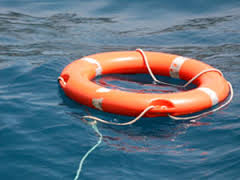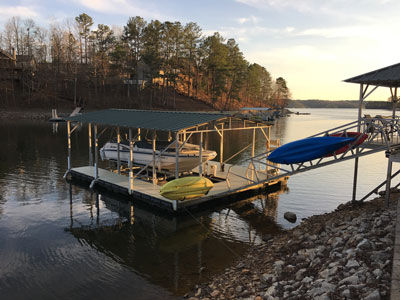 Legal & Safety Blog
Legal & Safety Blog
by Matt Devoti
Beware ‘Dry Drowning’ : A Lurking Threat to Kids After a Swim
My youngest daughter celebrated her first birthday earlier this month. Her aunt and uncle gave Lilly a wading pool as a birthday gift. You know the pool; molded plastic, about 36 inches in diameter that holds water to a depth of no more than eight or nine inches. This pool is even hot pink, with a small slide for Lilly to ride when she gets a bit more coordinated.
Mom got Lilly ready for her first swim in her new pool this past weekend. I prepped the pool. Mom sat in the pool with Lilly. Lilly splashed and kicked and laughed. I snapped a bunch of photos.
That night one of Lauren’s sisters forwarded an article that she came across about “dry drowning”. Lauren read a bit of the article to me. My oldest will turn 18 later this Summer. I admit, the article and “dry drowning” is news to me.
What is “Dry Drowning”?
“Dry drowning” occurs when one takes a small amount of water through her nose or mouth that causes her vocal cords to spasm and close, shutting off her airway and making it hard for her to breath. Water never reaches her lungs. Symptoms usually occur right after an incident in the water.
Dry drowning is different than a related condition – “secondary drowning”. Secondary drowning happens when your child’s airway opens up, letting water enter the lungs where fluid builds up resulting in a condition called pulmonary edema. The result of secondary drowning is the same as dry drowning: your child struggles to breath. However, secondary drowning symptoms generally start later, within one to 24 hours of the incident.
What are the Symptoms of these Two Conditions?
Dry drowning and secondary drowning have the same symptoms:
- Coughing (persistent or associated with increased work of breathing)
- Chest pain or discomfort
- Trouble breathing (rapid shallow breathing, nostril breathing or the ability to see between your child’s ribs or the gap above her collarbone)
- Feeling extremely tired
- Changes in behavior, such as irritability, forgetfulness or a drop in energy level
- Throwing up
What Should You do if You Spot these Symptoms after a Water Incident?
The good news is that dry drowning and secondary drowning are extremely rare. These conditions affect only about five percent of children who experience a “near-drowning” experience in which the child is submerged in water and has trouble breathing, but is revived. Further, dry drowning and secondary drowning incidents account for only one or two percent of all drowning incidents.
However, you should get help if your child experiences any symptoms of dry drowning or secondary drowning. Immediately seek medical attention if your child experiences respiratory symptoms such as difficulty breathing, wheezing, cough or chest discomfort. And, at the least, call your child’s pediatrician following any incident involving a water rescue. In fact, doctors recommend that parents keep an eye on their children for 24 hours after any incident in which their child is submerged in the water.
Can Dry Drowning and Secondary Drowning be Prevented?
Absolutely. Prevention is the same for these conditions as with any kind of drowning. Experts point out that children who are comfortable and skilled at moving about in the water are less likely to become submerged and take in water. Parents should consider introducing their children to swim lessons around age four years.
Of course, parents must always monitor their kids while in and around water and enforce pool safety rules. Any parent who has taken a child to the community pool or beach knows the stress of keeping an eye on your kids at all times; this monitoring is absolutely necessary.
And, finally, parents should take water safety measures any time they accompany their children to water. For instance, children should wear floatation devices while on boats and watercraft such as canoes, rafts, paddleboards and jet skis. Also, pools should have four-sided fences erected around them and you should never leave standing water where a child could find and get into it – like Lilly’s new wading pool.
Matt Devoti is a partner with Casey & Devoti, a St. Louis-based personal injury law firm. Matt and his law partner, Matt Casey, together have nearly 40 years of trial experience handling a variety of personal injury matters, including: car, truck and train accidents, medical malpractice and birth injuries, premises and product liability, elder care and sexual abuse, Workers’ Compensation, and wrongful death. If you or a loved one has been injured by the negligence of another, contact our office today for a free consultation: (314) 421-0763.








